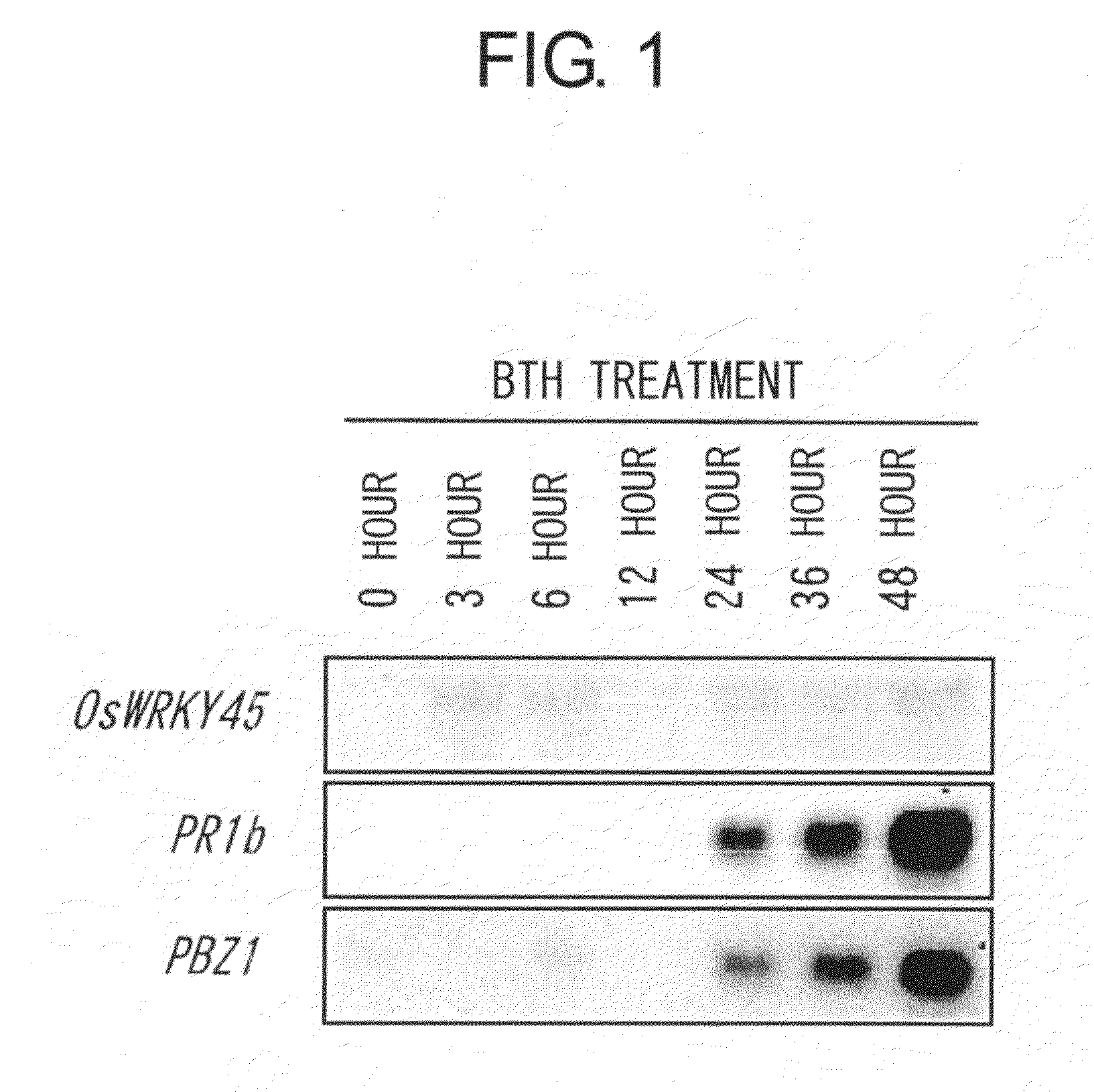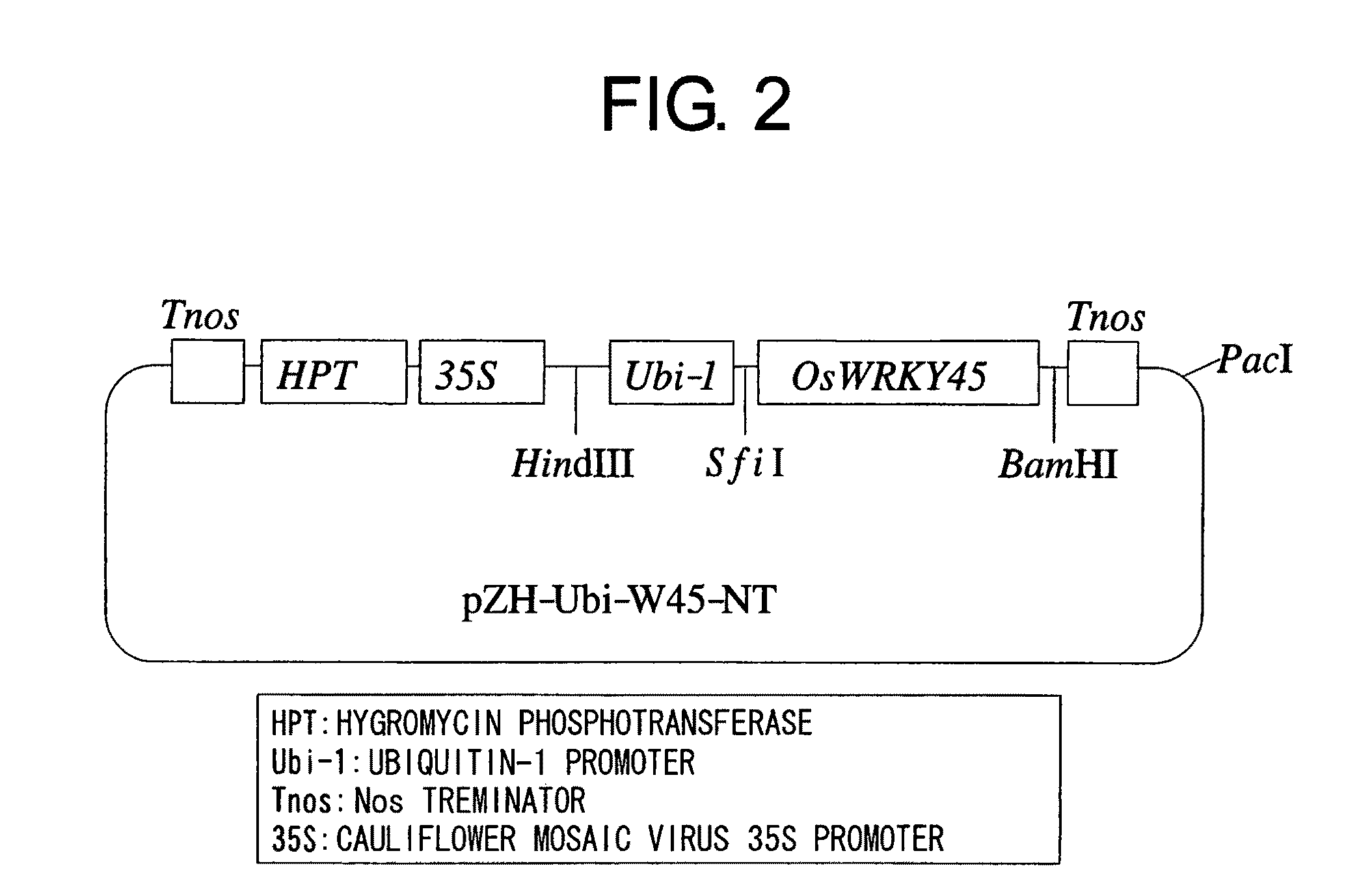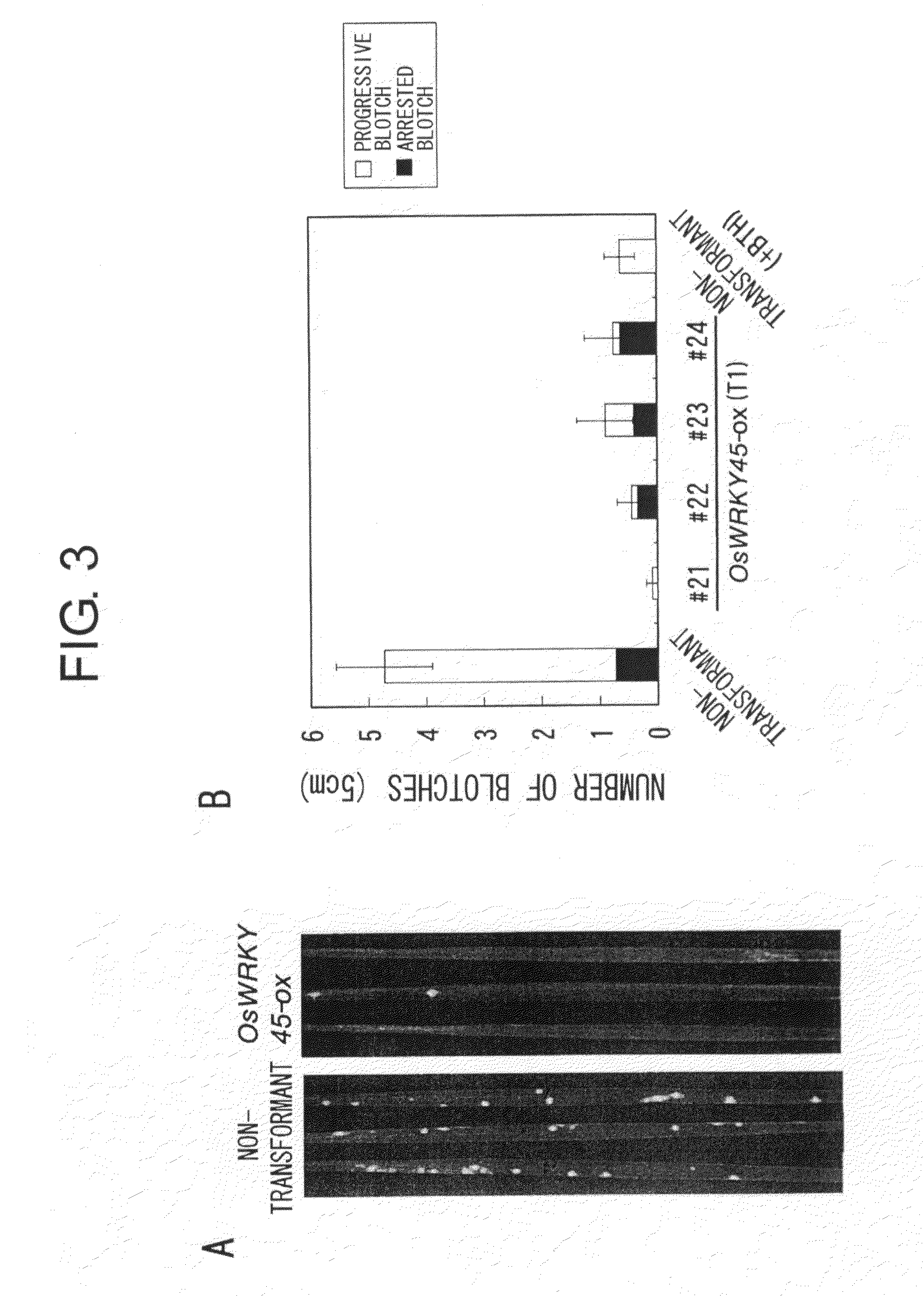Improving disease resistance in plants by introducing transcription factor gene
a technology of transcription factor and plant, applied in the field of genes, can solve the problems of insufficient effectiveness of disease resistance obtained by introducing a single resistance gene, hindering their practical application, no reports on the improvement of plant disease resistance, etc., and achieves the effects of minimal effect on rice growth, improved blast disease resistance, and reduced resistan
- Summary
- Abstract
- Description
- Claims
- Application Information
AI Technical Summary
Benefits of technology
Problems solved by technology
Method used
Image
Examples
example 1
Detection of a Transcription Factor Gene Inducibly Expressed by BTH
[0096]In order to detect a transcription factor gene inducibly expressed by BTH, rice seedlings (3.5-leaf stage) on day 10 after seeding were treated with 0.5 mM BTH (in 0.01% Tween 20 / 0.5% acetone), and the RNAs prepared over time (12, 24, 72, and 120 hours after the treatment) from BTH-treated and mock-treated rice leaves were subjected to DNA microarray analysis with the rice 22K array (Agilent). As a result, a WRKY transcription factor gene (OsWRKY45, AK066255; SEQ ID NOs: 1 and 2) that is inducibly expressed by BTH treatment was found. Northern blot analysis showed that OsWRKY45 expression was induced within 3 hours after BTH treatment (FIG. 1).
example 2
Preparation of High Expression Vector for OsWRKY45 Gene
[0097]A vector for constitutively expressing the OsWRKY45 gene in plants was prepared by the following procedures. First, pUCAP / 35S-NT (Kapoor et al., 2002) was cleaved with HindIII-BamHI, and an HindIII-BamHI fragment containing the corn Ubi-1 promoter derived from pAHC27 (Christensen and Quail, 1996) was inserted. Next, the obtained plasmid was cleaved at the BamHI-SacI sites between the Ubi-1 promoter and Nos terminator, and a complementary oligonucleotide (in which the top strand: 5′-GATCTGGCCAAATCGGCCGGTACCGGATCCGCGGCCGCGAGTC (SEQ ID NO: 3) and the bottom strand: CGCGGCCGCGGATCCGGTACCGGCCGATTTGGCCA (SEQ ID NO: 4) were annealed) was inserted to prepare pUCAP / Ubi-NT that includes both SfiI and BamHI sites between the Ubi-1 promoter and Nos terminator. pUCAP / Ubi-NT was cleaved with SfiI-BamHI, and an SfiI-BamHI fragment containing the full-length cDNA of the OsWRKY45 gene was inserted. Finally, this plasmid was cleaved with Hi...
example 3
Introduction of a High Expression Vector for OsWRKY45 Gene into Agrobacterium tumefaciens EHA101 Strain
[0098]In order to introduce the plasmid pZH-Ubi-W45-NT into Agrobacterium tumefaciens EHA101 strain, the strain was cultured with shaking in 5 ml of YEB medium (0.1% yeast extract, 0.5% meet extract, 0.5% peptone, 0.5% sucrose, and 0.05% MgSO4.7H2O) at 30° C. overnight. Next, 5 ml of the above culture was added to 200 ml of YEB medium in a 1-liter flask, and the mixture was further cultured at 30° C. for 5 to 6 hours. The cells were collected by centrifugation (at 4000 rpm for 5 min) and suspended in 100 ml of 10 mM Tris-HCl (pH 8.0). The suspension was centrifuged again, and the obtained cells were suspended in 2 ml of YEB medium. 200 μl of this suspension and 100 μl of a DNA solution containing 0.5 μg of pBE7133H-Thionin were mixed in a microcentrifuge tube, and the mixture was frozen in a dry ice / ethanol bath (for 5 min). The frozen mixture was then thawed in a 37° C. warm bath ...
PUM
| Property | Measurement | Unit |
|---|---|---|
| pH | aaaaa | aaaaa |
| disease resistance | aaaaa | aaaaa |
| plant disease resistance | aaaaa | aaaaa |
Abstract
Description
Claims
Application Information
 Login to View More
Login to View More - R&D
- Intellectual Property
- Life Sciences
- Materials
- Tech Scout
- Unparalleled Data Quality
- Higher Quality Content
- 60% Fewer Hallucinations
Browse by: Latest US Patents, China's latest patents, Technical Efficacy Thesaurus, Application Domain, Technology Topic, Popular Technical Reports.
© 2025 PatSnap. All rights reserved.Legal|Privacy policy|Modern Slavery Act Transparency Statement|Sitemap|About US| Contact US: help@patsnap.com



